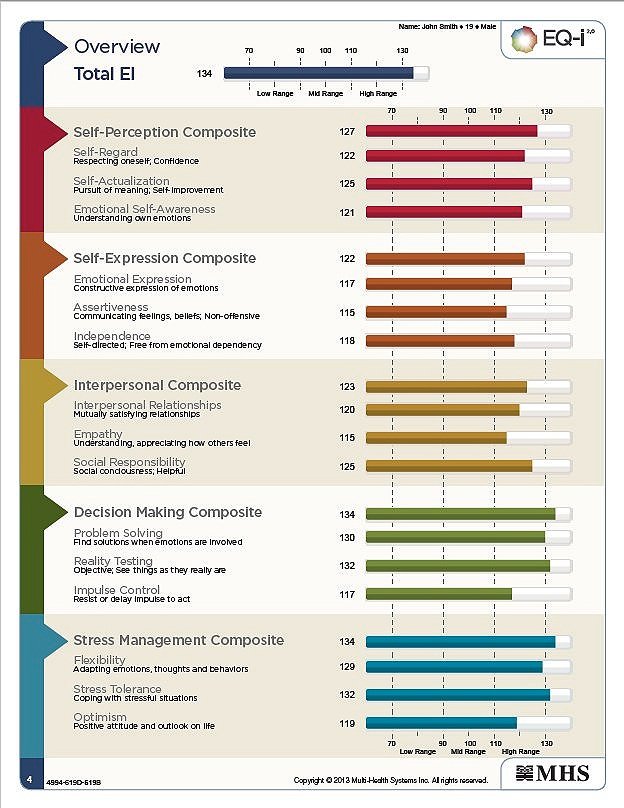What is the EQ-i 2.0?
Our emotional intelligence, referred to as our EQ (Emotional Quotient), can be defined as a set of emotional and social skills that influence the way we perceive and express ourselves, how we connect with others, cope with challenges and adapt to change.
The early Emotional Intelligence theory was originally developed during the 1970s and 80s, born from the stream of psychology called ‘positive psychology’. It was expanded on by the work and writings of psychologists Howard Gardner, Peter Salovey, John 'Jack'Mayer and Dr Reuven Bar-On
It is now regarded as a key indicator of individual and group success. Research reveals a strong correlation between emotional intelligence and on-the-job performance.
It also indicates that EI is a superior predictor of performance success when compared with traditional measures, such as cognitive intelligence (IQ). In direct contrast to cognitive intelligence, competencies associated with emotional intelligence can be developed and improved through self-awareness, education and coaching.
Why the EQ-i 2.0?
The EQ-i 2.0 (Emotional Quotient Inventory) is the world’s leading measure of emotional intelligence, a psychometric assessment tool applying decades of research to support effective human performance and development. It is one of the most valid and reliable EQ assessment tools and has been in use for over two decades. See meta analysis here.
First developed by Dr. Reuven Bar-On, and released in 1983, the EQ-i 2.0 model was based on clinical research he had undertaken into why certain individuals flourished compared to others who might have higher IQ’s.
This tool has now been used for over 25 years both clinically and and within corporate environments.
When to use the EQ360
Going beyond the perception of ourselves, the EQ360 incorporates the individual’s results as well as the perspective of their Manager, Direct Reports, Peers and can include other raters outside of the immediate workplace. It highlights the gaps between how the individual rates their level of emotional intelligence and how others perceive their behaviour in the workplace opening them up to greater opportunities for development.
This allows individuals to assess their leadership capability as well as receiving feedback regarding others’ perceptions of their emotional intelligence embedded within the leadership framework.





